There are two important elements of running back production evaluation: 1) adjusting for level of competition; and 2) adjusting for age. Contextualizing production with the quality of the program at which a guy played (I like to use Bill Connolly’s S&P+ rating system to this end) can increase the predictive power of that production in projecting draft capital, from an r-squared value of 0.1914 using dominator rating alone, to a value of 0.3071 using dominator rating and program quality in tandem. Further contextualization of that production with a player’s age raises the predictive power of player production profiles even more, to an r-squared value of 0.3812, nearly double that of using dominator rating on its own.
By combining the percentile rank of a player’s production in a given college season (e.g. their sophomore dominator rating vs. all other sophomores’ dominator ratings) with the percentile rank of their college team’s S&P+ rating, I can generate a percentile-based score that indicates how “good” the season in question was compared to all other player seasons.
Using these percentile scores, I have examined running backs from across all Division-I college football programs who posted the most impressive rookie seasons in 2019.
Starting from the bottom and counting up, here are the Freshman 15:
JERRION EALY, OLE MISS
Freshman Season Quality Score: 56.4
Ealy will need to add weight and avoid the allure of Major League Baseball (he’s a top prospect there as well), but the five-star talent is a weapon through the air and on the ground, as he caught 20 balls and averaged almost two yards per carry more than his teammates in a part-time role as a true freshman in the SEC. Ealy is legit, and is a player I have ranked as a borderline top-10 devy runner on pure talent alone.
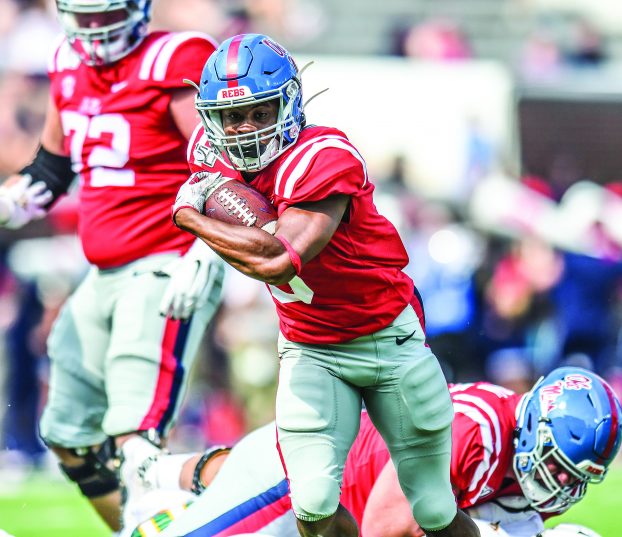
JAVIAN HAWKINS, LOUISVILLE
Freshman Season Quality Score: 59.8
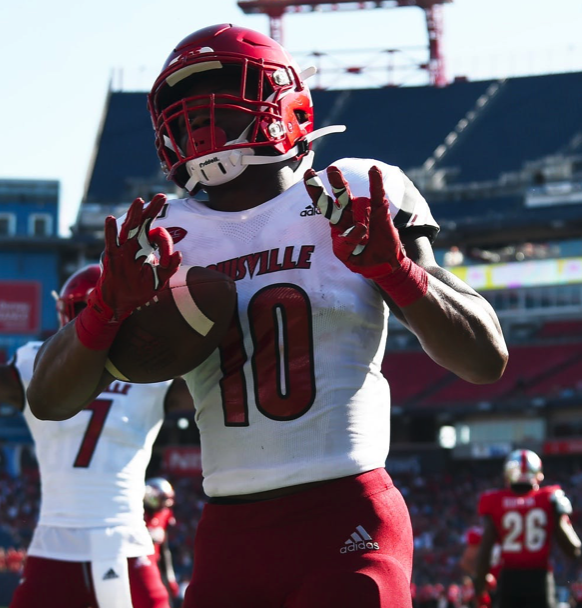
The 21.8% dominator rating that redshirt freshman Javian Hawkins posted in 2019 ranks in the 81st-percentile among all freshman seasons going back to the 2007 NFL Draft class.
An Ealy-sized receiver at just 5’9″ and 182 pounds, Hawkins will absolutely need to add weight or make significant strides as a receiver going forward to project as a decent contributor at the next level. He has the gaudy counting stats (1,525 rushing yards) and the big-play ability (82nd-percentile in 20+ yard run rate) that suggest he has the juice as a runner. But so did runners like Denard Robinson, Lache Seastrunk, and Ronald Jones. You either gotta be big, or be active in the passing game, so the five receptions from Hawkins’ freshman campaign will need to increase.
Kenan Christon, USC
Freshman Season Quality Score: 62.4
USC’s Kenan Christon is another small and fast back, but even in keeping with that theme, he might blow Ealy and Hawkins away. The 5’10”, 185-pounder is a former three-star recruit who holds the California state championship record in the 100-meter dash with a time of 10.30 seconds. His track speed translates to the football field. In a partial, true freshman season (in which he played only seven games), Christon earned a 5.1% target share while outperforming his Trojan teammates in yards per carry, 10+ yard run rate, and 20+ yard run rate.
He missed freshman breakout thresholds due to his limited early-season playing time, but Christon is likely to see much more work going forward.
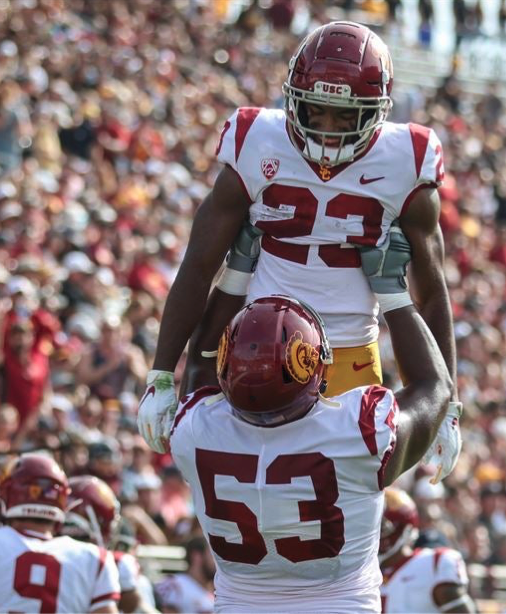
George Holani, Boise State
Freshman Season Quality Score: 62.7
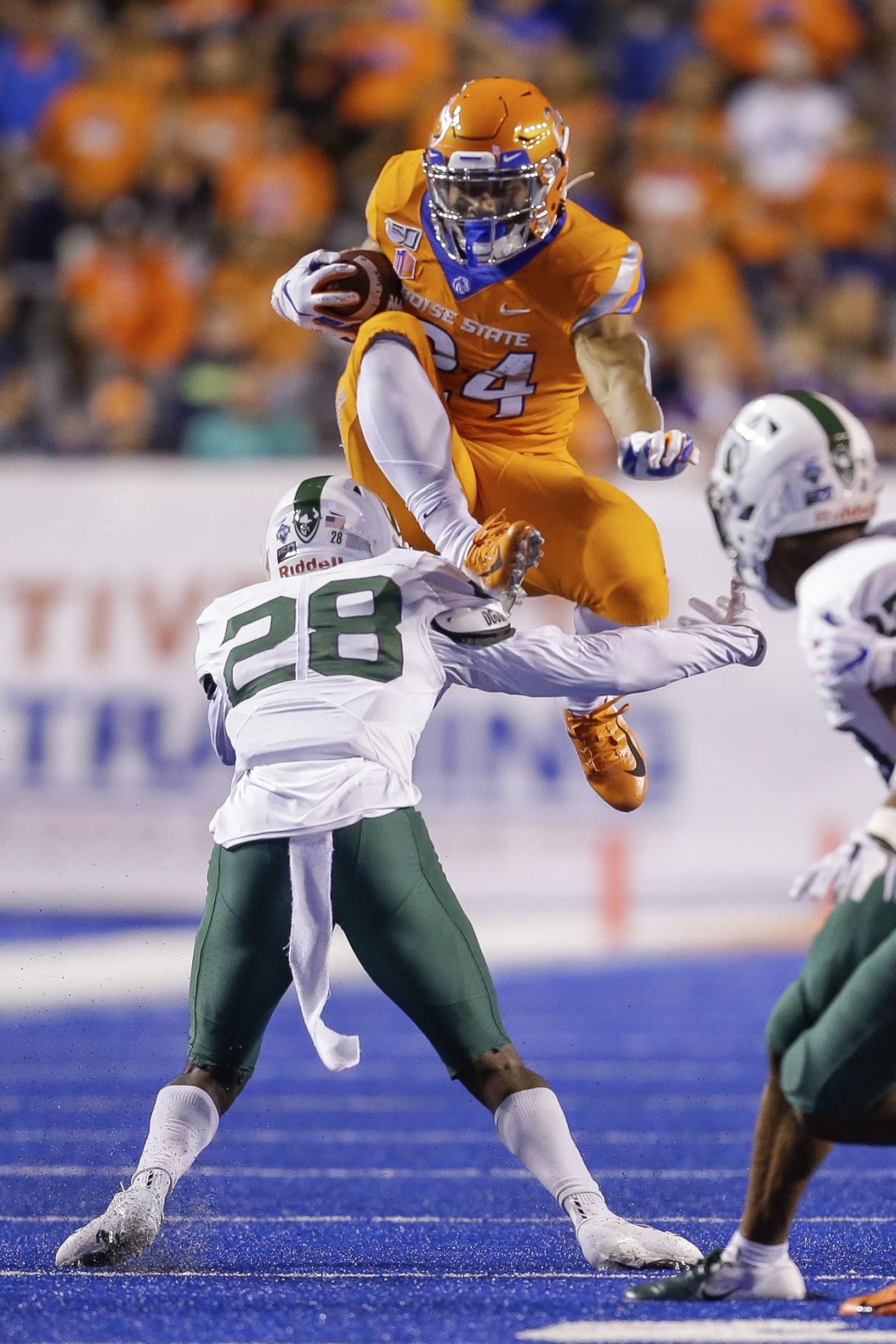
George Holani is not the kind of explosive athlete that the three players we’ve touched on already are. But, unlike them, he boasts a combination of near-workhorse size and quality receiving chops that bode well for his potential as a pro. Listed at 5’11” and 205 pounds, Holani’s well-rounded skillset saw him break out with 1,014 rushing yards and 26 receptions last season while averaging 0.75 yards per carry more than other Bronco backs.
Boise State has produced two 1,000-yard NFL rushers in recent years, in Jay Ajayi and Doug Martin, in addition to Jeremy McNichols and Alexander Mattison. Holani, according to the percentile scores outlined in this article, owns the best freshman campaign among those recent Broncos, and it’s a better age-adjusted season than either Martin or Mattison posted while in Boise. Holani is a precocious producer at a quality program with very few holes in his game.
Elijah Collins, Michigan State
Freshman Season Quality Score: 64.3
Michigan State’s Elijah Collins is a prototypical two-down back with good size. A three-star prep, the 6’0″, 217-pound Collins redshirted in 2018 before bursting onto the scene last year. He rushed for nearly 1,000 yards in the Big Ten while posting excellent efficiency numbers. His YPC+ and Breakaway Rate+ marks (which measure yards per carry and 20+ yard run rate, respectively, compared to the team average) both rank above the 88th percentile.
Collins’ contributions as a pass-catcher leave room for improvement. His 5.2% target share and 15 total receptions are solid marks, but he was horribly inefficient through the air, averaging just 4.1 yards per target with a 62.5% catch rate, numbers that both rank in the sub-12th-percentile range.
Despite his struggles in the passing game, Collins is a quality devy prospect. His mix of size, age-advanced rushing ability, and early production is unmatched by any running back currently in college football.
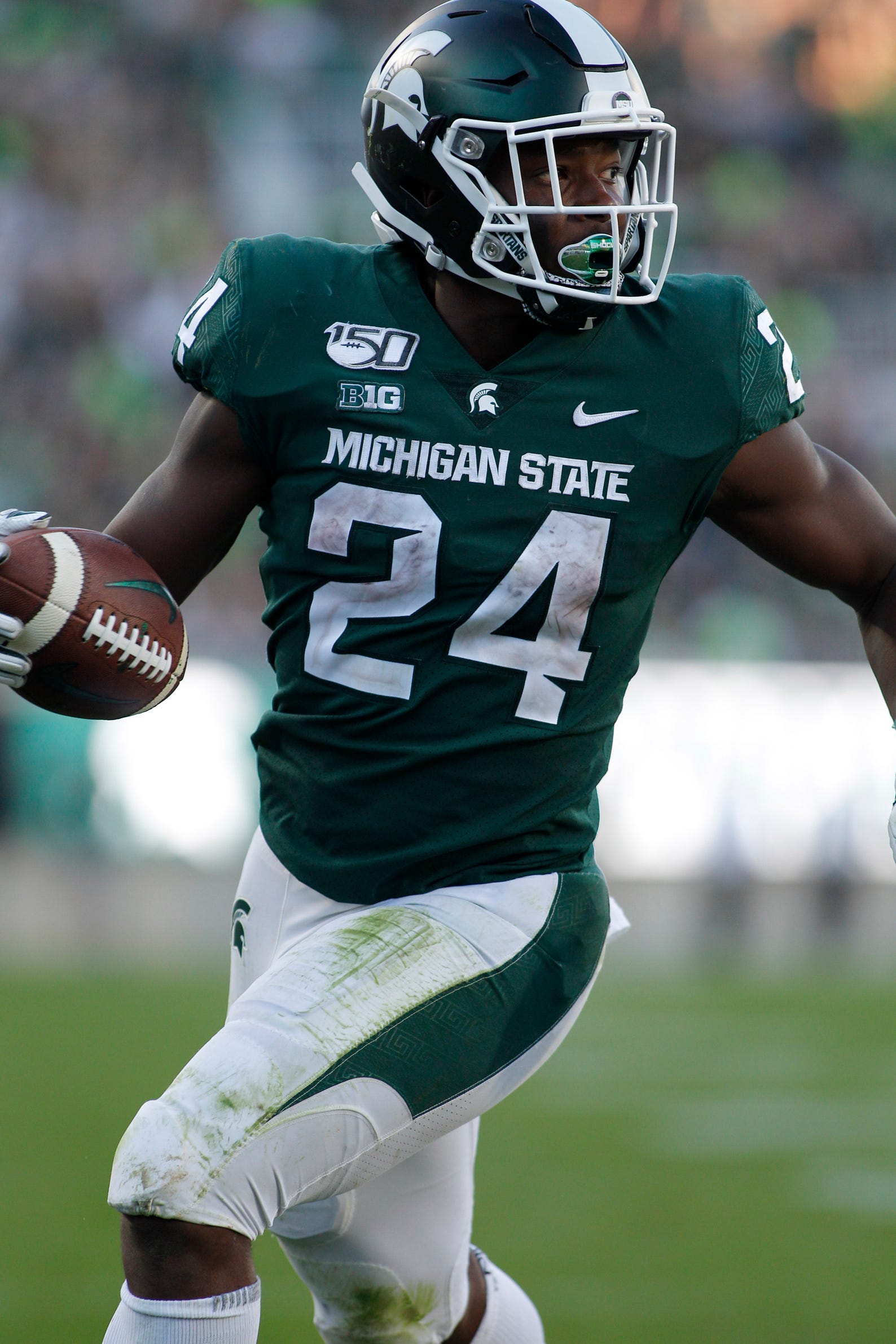
Tyler Goodson, Iowa
Freshman Season Quality Score: 64.3
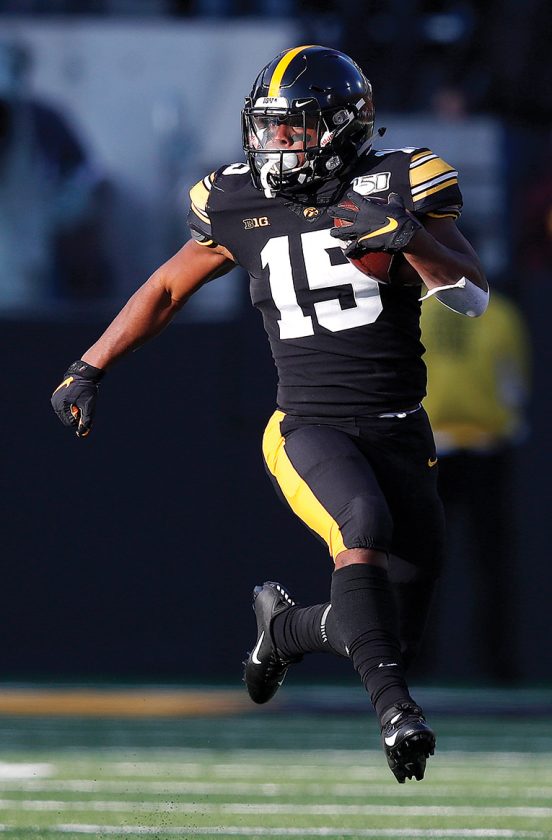
Tyler Goodson is another Christon-type as a 5’10”, 190-pound scatback with explosive ability as a runner and receiver. His 16.7% true freshman dominator rating for an Iowa squad that finished as the 15th-ranked team in the country is impressive. Goodson’s rookie campaign aligns his early-career trajectory with resumes of Trayveon Williams, Le’Veon Bell, Felix Jones, and Justice Hill.
As a smaller runner, it’s important to provide value in the receiving game, a box Goodson checks. His Satellite Score (a metric that adjusts receiving production for total offensive involvement to project how much of a player’s game pass-catching will account for going forward) of 42.5 is in Jalen Richard, Danny Woodhead, and C.J. Spiller territory. Goodson displayed sure hands with an 85.7% catch rate as a first-year player. On the ground, his Chunk Rate+ and Breakaway Rate+ marks land in the 75th and 91st percentiles, respectively.
Sincere McCormick, UTSA
Freshman Season Quality Score: 64.8
The search for the next Ahmad Bradshaw or Aaron Jones-type diamond-in-the-rough running back is a worthwhile one, and there’s no better candidate among current Group of 5 runners than Sincere McCormick, Conference USA’s 2019 Freshman of the Year.
McCormick was excellent in his first year of college football, hauling in 24 passes for 194 yards at a per-target clip that ranks in the 73rd percentile. He also dominated on the ground, averaging more than a yard per carry more than other Roadrunner backs. Most impressive was McCormick’s propensity for creating big plays; his 4.97% Breakaway Rate+ was in the 96th percentile.
The burden of proof for three-star recruits at smaller programs is high, but, as the only freshman in college football to post a dominator rating above 30% last year, McCormick is off to about as good a start as he could be.
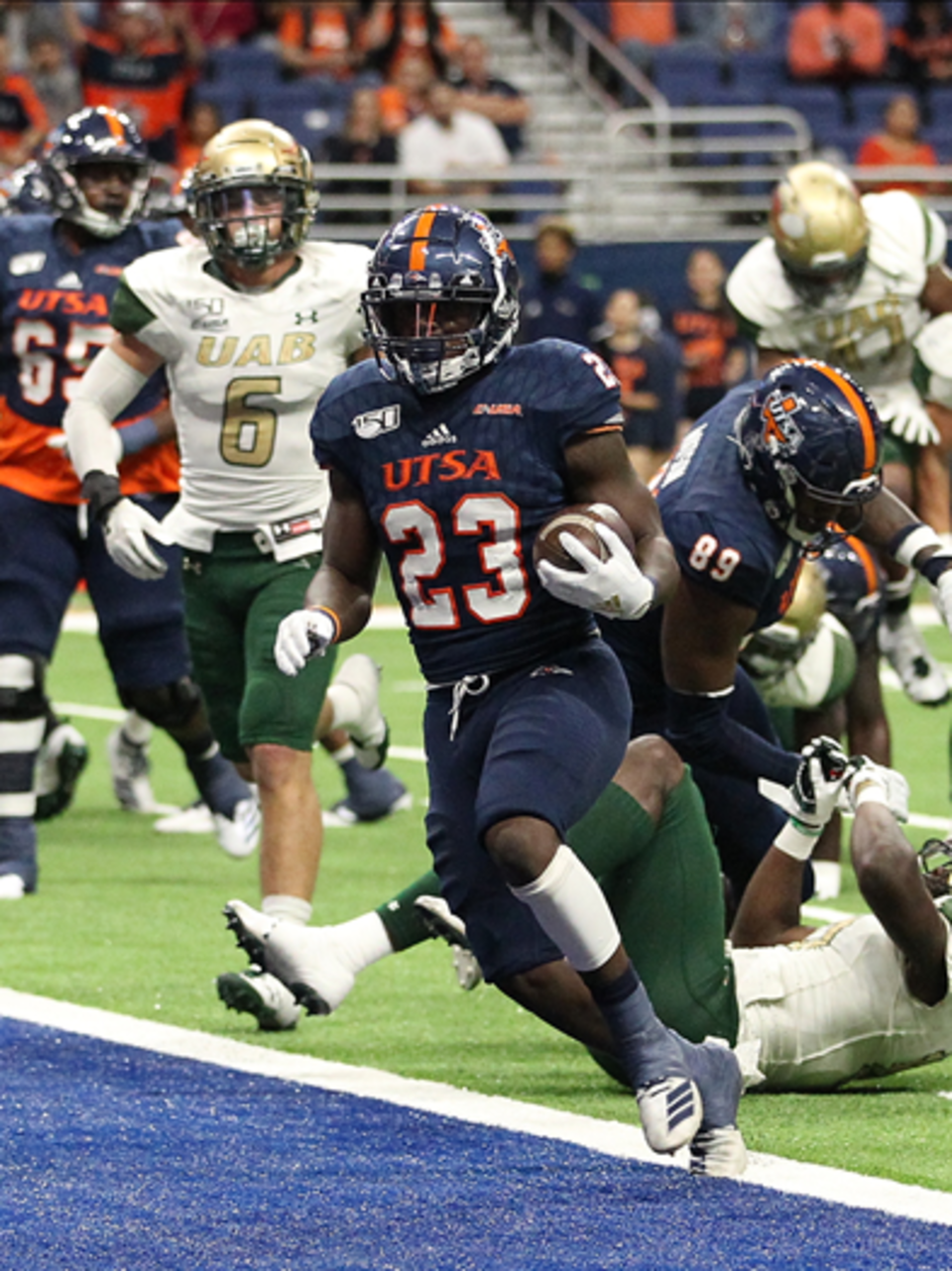
SaRodorick Thompson, Texas Tech
Freshman Season Quality Score: 66.7
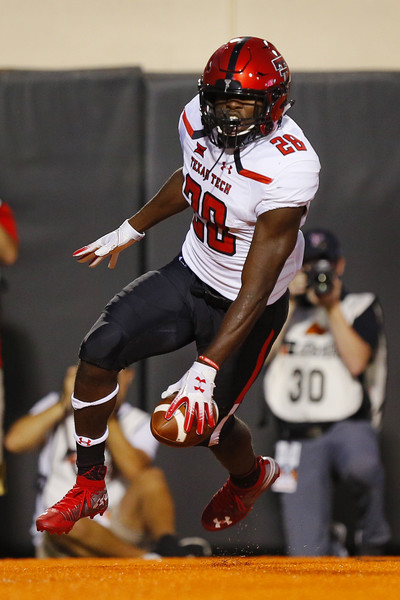
Texas Tech’s SaRodorick Thompson is an interesting player with good size (6’0″, 210), who also contributes heavily in the passing game. Successful NFL fantasy running backs possess size and pass-catching acumen as baseline prerequisites, and Thompson passes this sniff test.
Unfortunately, a closer look reveals a less-than-refined skillset for the Red Raider. While the redshirt freshman caught 39 balls on a 9.0% target share that already ranks as an above-average mark among all drafted backs since 2007, Thompson was curiously inefficient through the air. He averaged 3.2 yards per target and just 4 yards per reception, a number that doesn’t even crest the first percentile. On the ground, Thompson outperformed his teammates in Breakaway Rate, but his team-relative YPC and Chunk Rate (10+ yard runs) numbers are each just above the 21st percentile. Such a configuration in efficiency data — quality big-play numbers, but poor consistency otherwise — often speaks to a lack of nuanced ability as a runner. As a former three-star athlete, it seems fair to wonder if Thompson’s ceiling is much higher than what he’s already shown.
Noah Cain, Penn State
Freshman Season Quality Score: 67.7
Noah Cain joined the Nittany Lions as a highly-touted four-star recruit and was a strong overall contributor as a true freshman for one of the nation’s top 10 squads. His dominator rating of 14.8% on such a strong team means his 2019 is comparable in quality and shape to the rookie campaigns of running backs Joe Mixon, Beanie Wells, Joseph Addai, and Jamaal Charles.
Cain was less than stellar, however, from a per-touch perspective. He caught only seven passes on a 3.5% target share, and was substantially outdone on the ground by his teammates (especially Journey Brown, who smashed). Cain’s marks in YPC+, Chunk Rate+, and Breakaway Rate+ rank in the 8th, 26th, and 2nd percentiles, respectively.
Cain (5’10”, 206 pounds) has good pedigree, and the fact that he was such a sizable element of Penn State’s offense means I’m willing to look past the inefficiencies he showed as a first-year running back. Players like John Emery and Zamir White have yet to produce at the level of Cain, so he deserves some credit for even being on the field as much as he was. Growing pains, freshman adjustment period, the ankle injury (whatever it was), gives Cain a tentative benefit of the doubt for now.
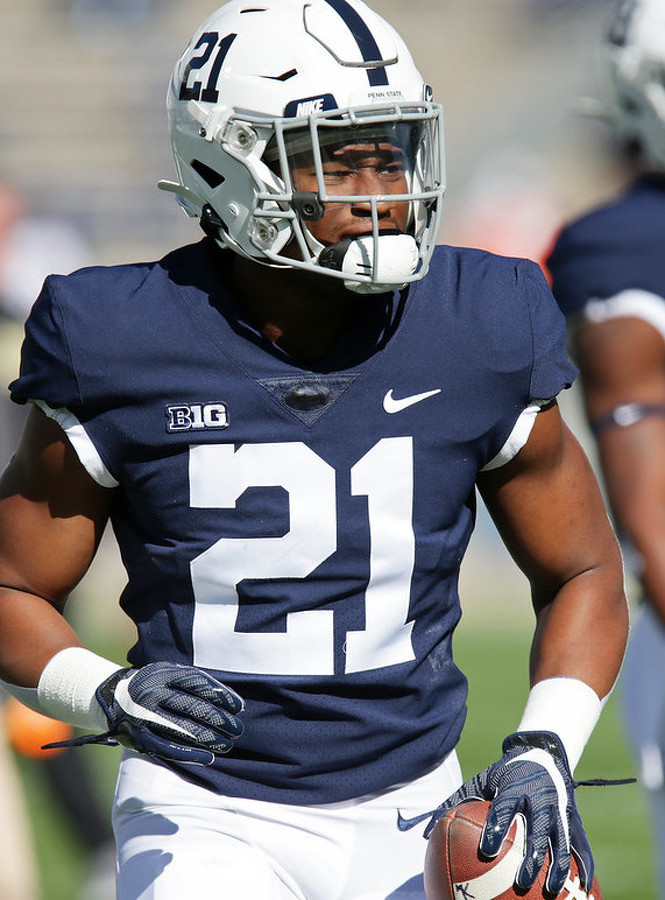
Re’Mahn Davis, Temple
Freshman Season Quality Score: 68.8
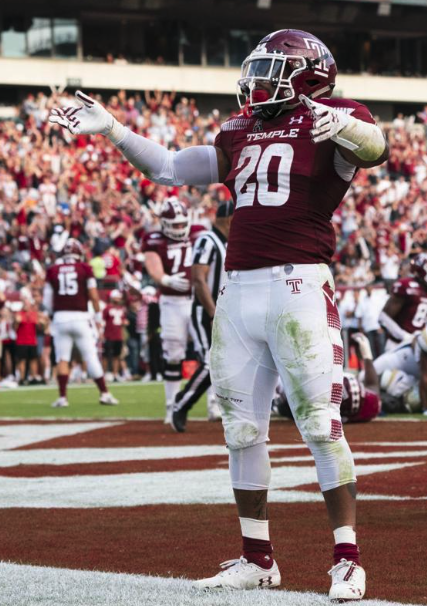
Re’Mahn Davis‘ 936 rushing yards and 24.8% dominator rating in 2019 gives him the best true freshman season for an American Conference runner since Marlon Mack ripped the league apart back in 2014.
Davis is a well-built athlete at 5’9″, 210 pounds, and his efficiency on the ground rivals that of Mack. His Chunk Rate+ mark of 6.30% is an 89th-percentile figure, ridiculous for a high-volume freshman in any conference. He slots in right around the career marks of running backs Bryce Love, Aaron Jones, and Royce Freeman.
Davis caught a respectable 15 passes, and while his catch rate of 60% shows he’s not as smooth a receiver as he could be, the 12.1 yards per reception he posted is a testament to the dynamism he displayed with the ball in his hands. Only Kenny Gainwell is a more exciting prospect among non-Power 5 runners.
Breece Hall, Iowa State
Freshman Season Quality Score: 71.1
Breece Hall‘s resume to date is very similar to the aforementioned Davis. Like the Temple back, Hall has encouraging size (he weighs 205 pounds with room to fill out on a 6’1″ frame). Hall was dominant as a true freshman with nearly 1,000 rushing yards and quality contributions as a pass-catcher. What separates the two is that Hall did his work at a Power 5 school and has four-star pedigree, propelling the best-case scenario end of his range of possible career outcomes.
Hall was solid as a runner in his rookie campaign, with efficiency numbers — the most impressive of which is a Breakaway Rate+ in the 67th percentile — that combine to create a composite rushing score of 53.2. He also was a plus in the receiving game, with at least 70th-percentile efficiency marks across the board while hauling in 23 passes.
With nothing left to do but hit the weight room and maintain the momentum of an all-around impressive, age-adjusted showing as a freshman, Hall is a solid, top-10 devy running back.
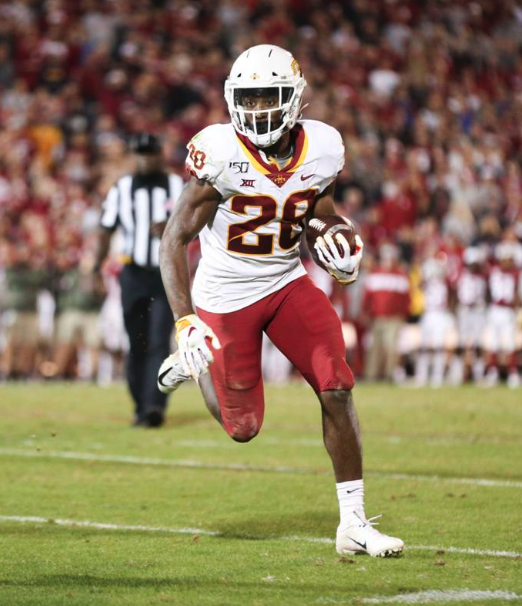
Zach Charbonnet, Michigan
Freshman Season Quality Score: 73.5
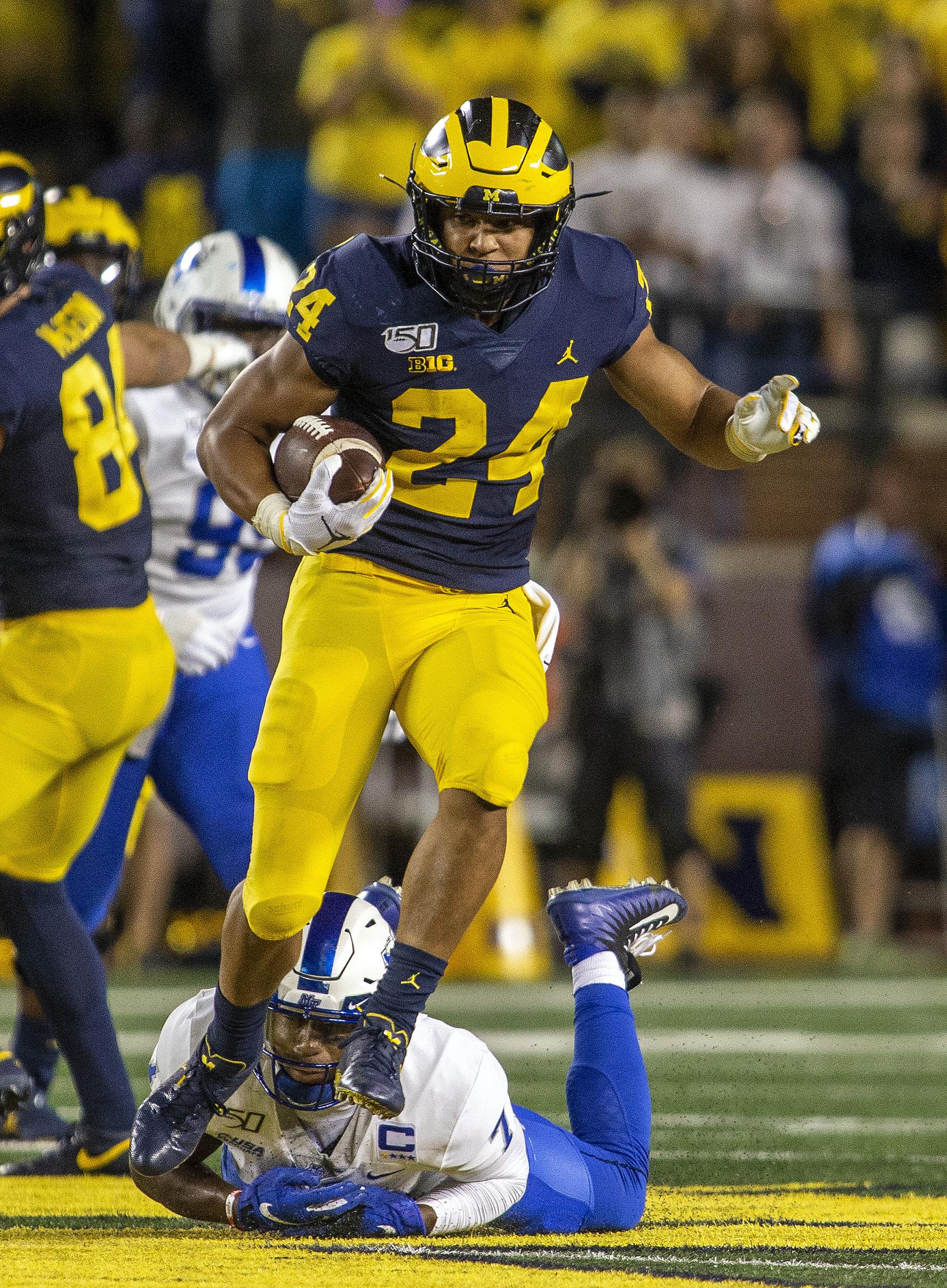
At 6’1″ and 220 pounds, Zach Charbonnet already looks the part of an NFL workhorse. His 726 rushing yards last year aren’t gaudy, but he surpassed market share-based success thresholds for 18-year olds. In doing so, he became just the 10th player since the 2007 draft class to break out as an 18-year old true freshman with at least 4-star pedigree while playing on a team with an S&P+ rating above the 80th percentile. The other names on that list are Nick Chubb, Keith Marshall, T.J. Yeldon, J.K. Dobbins, Mark Ingram, Jamaal Charles, Thomas Brown, Beanie Wells, and Todd Gurley.
Charbonnet is not a finished product, though. His Chunk Rate+ of 2.24% (a 62nd-percentile mark) shows that he was finding holes at the line of scrimmage and making linebackers miss to reach the secondary, but once he got there, his Breakaway Rate+ of -1.46% (15th-percentile) means he wasn’t extending those runs for long gains downfield. He also was a non-factor in the passing game, catching just eight balls for a lowly 2.0 yards per target.
If Charbonnet can expand the pass-catching aspect of his game, he will be an elite prospect when he eventually leaves school. Hall is right at his heels, but for now, Charbonnet’s size, early success, and age-advanced ability as a runner mean he is the #1 back in the class of 2022 regardless.
Isaiah Spiller, Texas A&M
Freshman Season Quality Score: 76.0
Texas A&M’s Isaiah Spiller wasn’t the runner as a freshman that classmates Hall and Charbonnet were — his Chunk Rate+ mark of -4.03% slots in at the 11th percentile — but Spiller was more productive and more involved as a receiver than both of them.
Like Charbonnet, Spiller stands at 6’1″, weighs 220 pounds, and is a former 4-star recruit. He nearly crested 1,000 yards rushing as a rookie, and his involvement as a receiver means he has three-down potential at the next level. The 29 balls he caught are an 87th-percentile total, and his Satellite Score of 37.7, combined with his bell-cow size, puts him in Kareem Hunt, David Johnson, and Damien Williams-territory in terms of his ability to fill roles as both a pass-catcher and inside runner.
Spiller is a borderline top-10 devy running back.
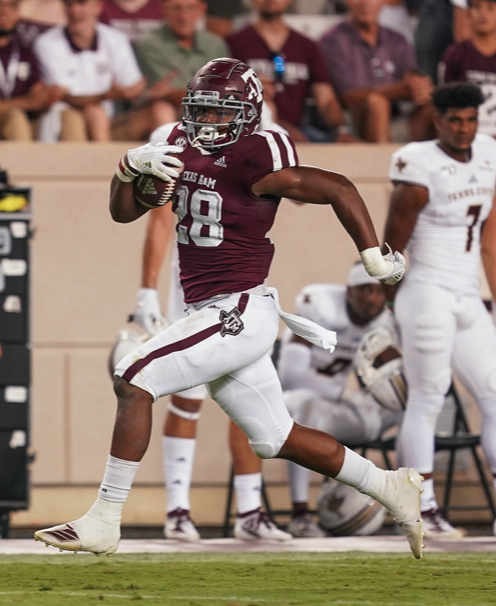
Richard Newton, Washington
Freshman Season Quality Score: 77.2

Richard Newton‘s redshirt freshman season for Washington was technically impressive from a quality-production-at-a-quality-program perspective, but beyond his 79th-percentile rookie dominator rating of 21.4%, it’s hard to find reasons to be excited about his profile.
Newton is 6’0″, and 210 pounds, but he was frankly not good as either a runner or a receiver in 2019. He caught only two passes (albeit one for a pretty nice TD) and he underperformed his backfield mates in YPC, Chunk Rate, and Breakaway Rate.
Newton had the same productive-but-not-efficient problem that Cain did last year, but Cain was a much more highly-touted prep playing as a true freshman. Newton has neither of those asterisks to apply to his performance. For now, I’m in wait-and-see mode before I get at all interested.
Kenny Gainwell, Memphis
Freshman Season Quality Score: 80.7
According to the method I’m using to rate seasons in this article, Kenny Gainwell‘s 2019 season is more impressive than all but 25 freshman seasons in my database. That means that in any given year going back to 2007, Gainwell’s first season is likely to be the first- or second-most impressive debut in the entire draft class.
Not just a compiler, Gainwell racked up his 2,069 yards from scrimmage on incredible efficiency, both on the ground and through the air. He outgained his teammates by 2.10 yards per carry while outpacing them in Chunk Rate and Breakaway Rate by 4.60% and 3.80%, respectively. His performance in each of those three metrics lands him in the 80th percentile.
Gainwell was equally impressive as a receiver, hauling in 51 passes at a 90th-percentile clip of 10 yards per target. His composite receiving score of 85.3, even adjusted for level of competition, is the 7th-highest mark in my database.
The only red flag on Gainwell’s profile is his size. He is a slim 191 pounds at 5’11”, and will need to add some weight in order to resemble even the smallest lead backs at the next level. As long as he can get up over 200 pounds and remain healthy with his same dosage of workhorse touches going forward, he should be good. The NFL has shown that super-dynamic, super-versatile threats — like Reggie Bush, Christian McCaffrey, Brian Westbrook, and Austin Ekeler — will get plenty of work in spite of less-than-ideal size. Gainwell exists somewhere on that spectrum, and only Travis Etienne and Najee Harris are ahead of him as prospects among current college runners.
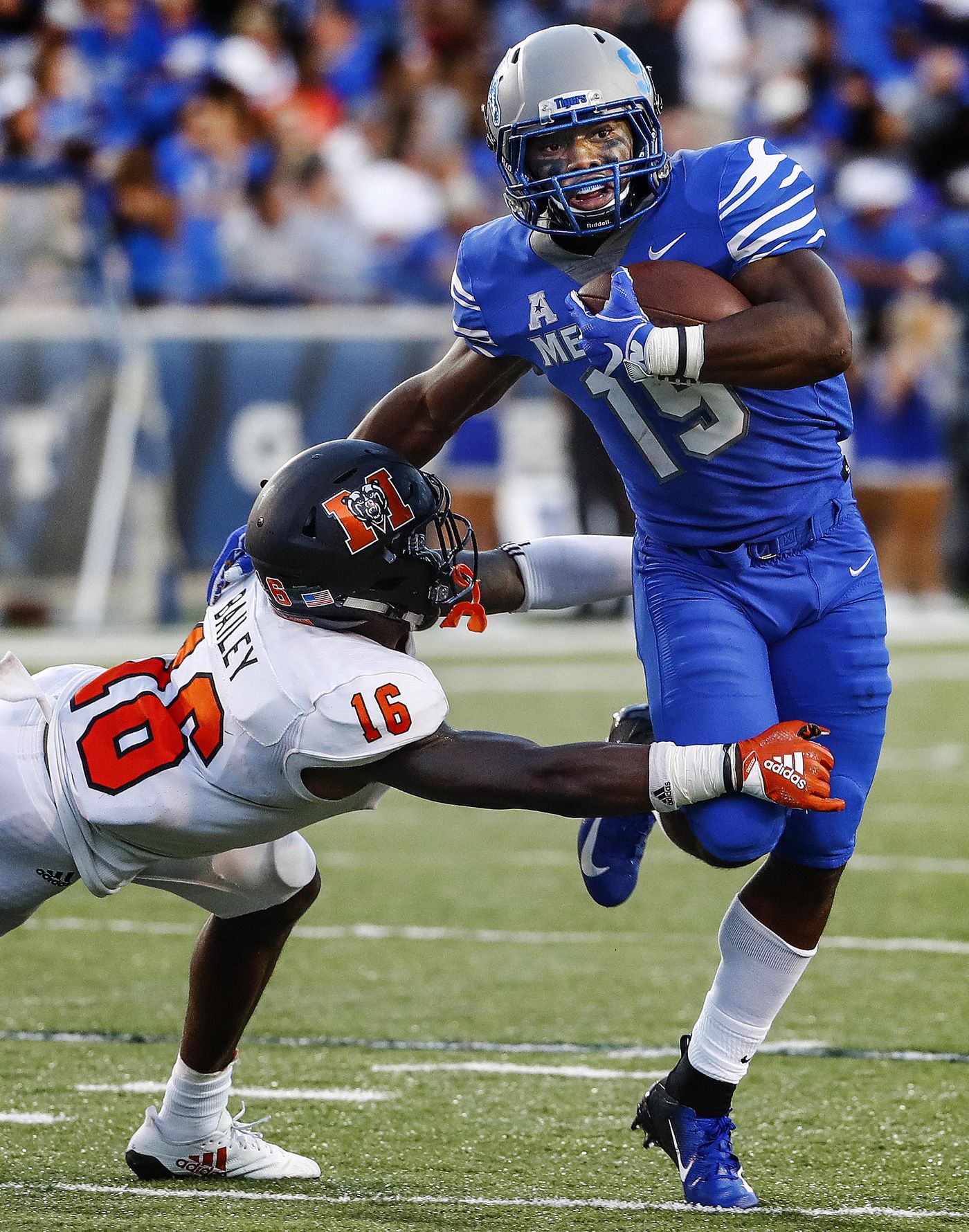
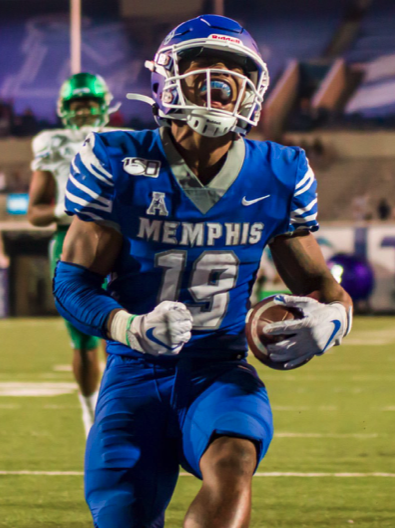
For more devy, dynasty, and prospect-related work, follow Noah Hills on Twitter @noahmoreparties.


